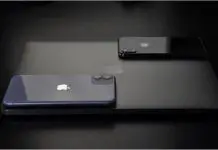
Sulfation is one of the top reasons or causes that leads to the death of many car batteries. It is a phenomenon that happens over time, where the battery is overwhelmed with sulfate buildups that prevent it from storing energy.
One of the ways to combat this phenomenon is by using a good and reliable desulfator. A desulfator is a handy device for drivers designed to restore a lead-acid battery’s capacity, further extending its service life. Widely known as reconditioners or regenerators, this is a device that every car owner or driver should have.
How to use a battery desulfator? Using a desulfator is a pretty straightforward process that can be carried out by simply connecting it with the battery you will recondition. Start by connecting the red cable of the device with the battery’s positive terminal, then the black cable with the negative terminal.
Make sure that they are properly connected with the right polarity. Plug the desulfator into a power outlet and then activate the device and let it do its magic. Wait for a while to allow the reconditioner to carry out the desulfation, and then that’s it! Desulfators come in various models and designs.
You have to keep in mind that they will have different operation instructions because of this, but all of them are similar in the way they operate. This is the basics of using a desulfator, which is applicable to almost all models.
So, to be sure that you are using a battery reconditioner, make sure to check the owner’s manual of the device and check it for the instructions on how to use it. Anyway, to leave an answer to the question. To use a desulfator, you simply have to connect it with the battery, plug it into a power source, and activate it.
Are you staring at your sulfated automotive battery, thinking, and wondering if there’s something you can do to salvage it? Then you are in the right place and probably had an idea about desulfators, mentioned earlier.
Yes, there’s still hope for your battery, and it is provided by a good and reliable desulfator. Here’s what everything you have to know about it.
Defining a Desulfator and Understanding How It Works
A desulfator or battery reconditioner is defined as a device that restores the capacity of a lead-acid battery. This device does it by using voltage to generate pulses with high-frequencies to zap sulfate buildups within the battery, attached on its plates.
These high-frequency pulses the device generates gets rid of the sulfate crystals by dropping them into the acid within the battery, allowing them to dissipate.
With reliable and good reconditioner, it is said that you can revive a dead car battery and rejuvenate its ability to store energy. It will allow you to recondition your failing battery to extend its service life and provide you a good money-saving potential.
As a desirable device for drivers and car owners, most battery chargers today have this function as a built-in feature.
So, if you have a problem with a sulfated automotive cell, all you have to do is look for a reliable model or shop for a battery charger with a built-in reconditioning feature. It will allow you to carry out an attempt to revive your dead battery and get it back running again.
Desulfating a Lead-Acid Battery With a Reliable Reconditioner
If you want to carry out an attempt to revive a dead battery because of sulfation, it will require to carry out a few several tests first. Desulfating, a car power cell, will also require you to use an appropriate set of devices and tools.
First, you have to check if your battery is suitable to undergo the process, and then you have to make sure of other aspects checked out. To understand this better, here’s a complete guide on how to carry out a desulfation process.
Ensuring that the Battery is Qualified for Desulfation
As mentioned earlier, desulfating a battery will require you to make sure that the battery is suitable for the process. The first thing you have to is to verify its qualifications to see if desulfating it is worth it or not. One of the requirements for desulfation is that the battery is well “rested,” and its electrolyte level is correct.
What a “rested” battery means is that it is fully charged as much as possible, and it is on the left on the idle state for at least twelve hours. Idle means, it is not connected with a load or charger. In any case, the battery did not receive the charge; it is possible that it is already dead, and there’s no way it can be revived.
To check if your battery is qualified for the desulfation process, here are the steps you have to do. You will have to use a voltmeter or a multimeter for this process.
Step 1: Making Sure the Battery is “Rested” and Everything Check Out
For your battery to be qualified for the desulfation process, the first thing you have to do is check if it has a voltage reading. Refill its electrolyte of the battery and make sure it checks out.
Recharge the battery and make sure it is fully charged, then allow it to rest by disconnecting it from the charger and load. Leave it for at least twelve hours before carrying out the next step.
Step 2: Test the Battery With a Voltmeter or Multimeter
Once you have made sure that the battery is fully rested, check if it qualifies the desulfation process. Use a multimeter or voltmeter to check the battery’s voltage rating with no load, also called as open-circuit voltage (OCV).
If the reading of the tester is below the 24.8 volts ceiling, it means sulfation already killed the battery, and the process won’t do anything. If the tester reads 24.8 volts or more, the battery is recoverable, but it needs to be slowly repaired before the actual desulfation.
If your desulfator has the feature of identifying if the battery can be desulfated, it will easier since it will tell you just by connecting it with the cell. If the reading is 24.8 volts, the desulfator can get it to qualify by giving it time.
Step 3: Proceed to Desulfation or Let the Device Repair it First
If everything checks out correctly, you can then proceed in carrying out the desulfation of the battery. In case the reading is 24.8 volts, then it will need a minor repair first before the process.
With a device that has this feature, it can get it ready by charging the battery to 100% state by means “float charging” or attempting to recharge it to its full capacity several times until an improvement on the reading happens.
If the reading result does not improve, desulfating it is not applicable. Otherwise, you can proceed to the actual process.
Desulfating the Lead-Acid Battery With a Desulfator or Reconditioner
Once you determine that the battery can be revived or suitable for a desulfation process, you can proceed to the actual operation. Depending on the device you have, the steps on how to operate it will vary. So you have to make sure by checking its owner’s manual.
The steps I am going to disclose in this part are pertaining to the core steps on how to operate a reconditioner of desulfator. The steps included may be different from your device. However, the process will still be similar to this.
Step 1: Connecting the Device with the Battery to Desulfate
Suppose your car battery is qualified for desulfation, and it is already prepared for the process. The first step in the process is connecting the battery with your desulfator. Take its jumper cable for the positive polarity (usually the RED one) and connect it with the battery’s positive terminal.
Do the same with the negative cable (usually the black one) and connect it with the battery’s negative terminal. Most advanced models will have a notification feature when they detect a connection with reverse polarity.
If yours doesn’t have that feature, the best thing you can do is to make sure the connection is correct.
Step 2: Plug the Desulfator Into a Power Source
Take note that there reconditioners that can use a healthy battery as a power source, and there those designed to be directly plugged into an outlet. Keep in mind that a desulfator is a device that needs voltage to generate the high-frequency pulses that gets rid of the sulfate crystals.
Some of the models available today are sophisticated enough to use another battery as a power source, while some rely solely on power outlets. Regardless of where the voltage it needs comes from, the bottom line is that this step requires a power source.
Step 3: Selecting the Desired Operation and Activating the Device
Once everything is set, you are now ready to carry out the actual desulfation process using your desulfator. With a correct connection between the battery, desulfator, and power source, set the device to the proper output suitable for the operation.
This is for the units ideal for advanced users. Desulfators with automated detection will just require to check for the correct and secure connection. And then, activate the desulfator; for some models, there are several buttons and indicators that represent different modes like maintenance, etc. However, this is the step where the desulfator will do its thing.
Step 4: Wait for the Device to Do Its Magic and Check the Battery
After giving the desulfator time to desulfate or recondition the battery, more advanced models will have an LED indicator that will tell you the process is done. Some also proceed to charge the battery.
Regardless of the model of your desulfator, this is the final step of the process where you will disconnect the device from the battery and power source.
This is where you will be checking if the process is successful by checking the battery if there has been an improvement in its capacity. If the battery capacity improved, then that means the desulfation process is successful.
That is how to use a desulfator in attempting to recondition a lead-acid battery. For the best results, it is recommended that you prepare the battery to be desulfated and make sure that it qualifies for the process.





